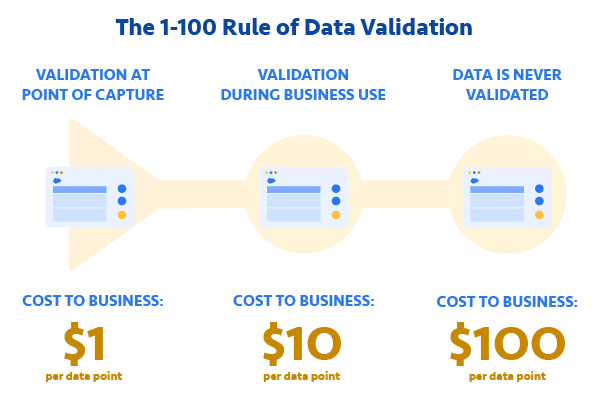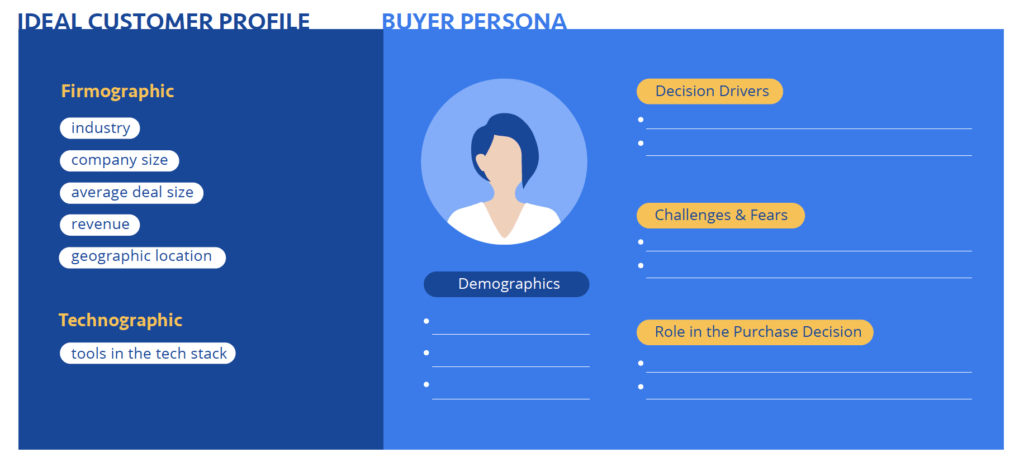How to Build a Sales Prospect List [Free Template]


Chris Villa
This post was originally published in May 2021 and has been updated for accuracy and comprehensiveness.
Building a comprehensive B2B sales prospect list goes beyond collecting potential clients’ contact information: it is the backbone of your effort to convert prospects into clients. Your sales prospect list is essential for identifying leads that match your ideal customer profile, so using clean data is key to refining your audience to those who are most interested in your services.
This blog will discuss how to build a sales prospect list, including a template developed by EBQ’s data team. It will also discuss key tips for building a great contact list and how to effectively utilize new channels to find new prospects for your business.

Download the Sales Prospect List Template
Utilize our sales prospect list template to start finding the right leads that fit your ideal customer profile.
The Importance of a Good Sales Prospect List
Before working with EBQ, many of our clients had difficulty converting sales prospects into clients. Their data was unorganized and outdated, leaving the sales team to determine if their contacts were even at the same company. Some clients even purchased inaccurate prospect data lists, wasting both time and money.
With EBQ, these clients were able to build a comprehensive B2B sales prospect list with accurate and relevant data that led to greater efficiency in their sales strategy. By using the sales prospect list template below, your business can experience the same success.
Sales Prospect List Template
A comprehensive B2B sales prospect list is your key to a successful outbound sales strategy. The information below will help you create your list and increase sales efficiency:
Company Information
Your sales prospect list is more than just collecting company information, so it is essential to understand your ideal customer profile. To make sure a potential buyer is a good fit and can afford your solutions, you will need the following information:
- The company’s name
- The company’s website
- The company’s industry
- The company’s size (i.e. how many employees?)
- The company’s annual revenue
- The HQ’s geographic location (address, city, state, zip code, country)
- Any other relevant company description
- The company’s LinkedIn profile
Some clients will also need to include niche data points in their sales prospect lists. Though very specific, they can be the difference between a potential client and a company that will not convert. For example, a healthcare company might need to target hospitals that have a specific number of beds.
Your sales prospect list should have a space to include any additional data that can help identify prospects closer to your ideal customer profile.
Contact Information
Once you’ve determined the ideal companies for your services, the next step in your buyer persona is to find the point of contact at the company. We often collect multiple contacts at the same company, as there are various stakeholders involved in decision-making.
You need enough information for each contact to determine if they fit your buyer persona and to get in touch with them, including:
- Name
- Job title
- Phone number(s)
- Email address
- LinkedIn profile URL
- Location (city, state, country)

Download the Sales Prospect List Template
Utilize our sales prospect list template to start finding the right leads that fit your ideal customer profile.
Should You Purchase a Prospect List?
Developing a comprehensive B2B prospect list can be tedious, so many companies choose to purchase prospect data from large providers. However, your organization must be highly critical of these lists to ensure they contain accurate and clean data.
Purchased prospect lists can contain a great deal of inaccurate data. Some might include contacts that no longer work at the same company, out-of-date contact information, or even companies that have since been acquired. As a result, your sales team could spend a lot of time chasing dead leads and negatively impacting productivity.
The 1-10-100 rule was developed in 1992 and still holds true today. It states that the average organization spends roughly $1 per contact to verify the data is accurate. If an organization cuts corners and purchases an inaccurate list, they will spend roughly $10 per contact to correct the data. If the organization continues to utilize bad data, that cost can balloon to $100 per contact. To put it in perspective: if an organization has a database of 100,000 contacts, and 40% of that data is inaccurate, it can translate to up to $4M in lost revenue.

Ensuring your sales prospect list is filled with clean data will save your organization money in the long run, which is why we encourage purchasing human-curated prospect lists. EBQ Data Specialists offer database-building services, saving organizations valuable time while increasing sales efficiency. While our customers focus on growing their outbound sales strategy, we help them identify relevant sales opportunities through:
- Dynamic use of automation to speed up repeatable tasks
- Human insight for maximum accuracy and research purposes
- The best data utilities (without clients having to pay for them)
5 Tips for Building a Great Sales Prospect List
The pitfalls of inaccurate data are clear, but there are still many great ways to build and enhance your B2B sales prospect lists. Here are five tips to take your outbound sales strategy to the next level:
Build a Well-Defined B2B Buyer Persona
Understanding your company’s buyer persona, or ideal customer profile, is essential to building a comprehensive sales prospect list. Not only does it help you understand who to contact, but also how your potential customers reach purchasing decisions. You’ll want to develop your buyer persona before you begin researching potential leads.

EBQ’s Sales Development Representatives (SDRs) are in charge of nurturing cold and inbound leads into prospects who are interested in meeting with a salesperson. SDRs are integral to the development of an ideal customer profile by gathering information and warming up primary leads. This leaves your salespeople more time to focus on closing deals and growing your business.
As the business landscape changes, so too will your buyer persona. It is important to revisit your buyer persona regularly to ensure that it is still accurate. SDRs should consistently monitor your leads and make necessary adjustments to ensure your sales strategy is always running at maximum efficiency.
Invest in a CRM
In the world of marketing automation, more and more businesses are turning to CRM (Customer Relationship Management) systems. While building a database with spreadsheets is cost-effective, you’re more prone to human error and slow data analysis. Automating your prospect list saves time and stress, keeping your prospects organized and improving your outbound sales strategy.
EBQ proudly offers CRM Consulting Services to help your business get the most out of your CRM system. As you save time with organized and automated workflows, your salespeople can focus on closing deals and growing your business.
Utilize Website Forms
Adding relevant and engaging content to your site not only positions your business as an industry thought leader, but it can also attract new sales prospects. Many companies utilize gated content, placing content like whitepapers and e-books behind a contact form. This is a true win-win: potential customers receive valuable information, and you receive clean and up-to-date contact information for your sales prospect list.
By using a CRM system, you can automatically add readers’ information to your database and contact them via marketing automation. If you’re interested in using marketing automation to collect prospects through contact forms and gated content, check out our B2B Marketing Automation Guide where we discuss this strategy in detail.
Scrape Social Media
Social media is more than just a way to connect with friends and family: it is an incredibly effective tool to grow your sales prospect list. LinkedIn has become the premier place for professionals to connect digitally, and you can gain valuable information like industry, company size, and geographic location by simply visiting a prospective client’s profile.
LinkedIn is typically a reliable source as users update their profiles themselves. That said, it is still essential to cross-reference your research as information isn’t always updated in a timely manner.
Review Company Websites
If you’re still struggling to determine if your sales prospect data is accurate, you can always refer to a business’ website. Most companies have an “About Us” or “Leadership” page that lists key decision-makers along with their roles and even their contact information. It can also help verify if a prospective client is still working at the same company.
As with LinkedIn, it is important to cross-reference your information as these pages might not be updated in a timely manner.
Get Started With Clean, Accurate Sales Prospect Lists
Building a comprehensive B2B prospect list is the key to a successful sales strategy. Your ideal customer profile will help you determine the right people to contact, and keeping your data clean will save your business money in the long run. Utilizing marketing automation tools like a CRM system and website forms can help you gain even more leads and generate more revenue.
When working with EBQ, your business can rest easy knowing that your sales prospect data is in good hands. Our SDRs and Data Specialists will work to build your buyer persona, contact leads, and organize your data, leaving your salespeople to focus on doing what they do best: closing deals and generating revenue. Visit our Services page to learn how we’ve helped thousands of businesses grow.

